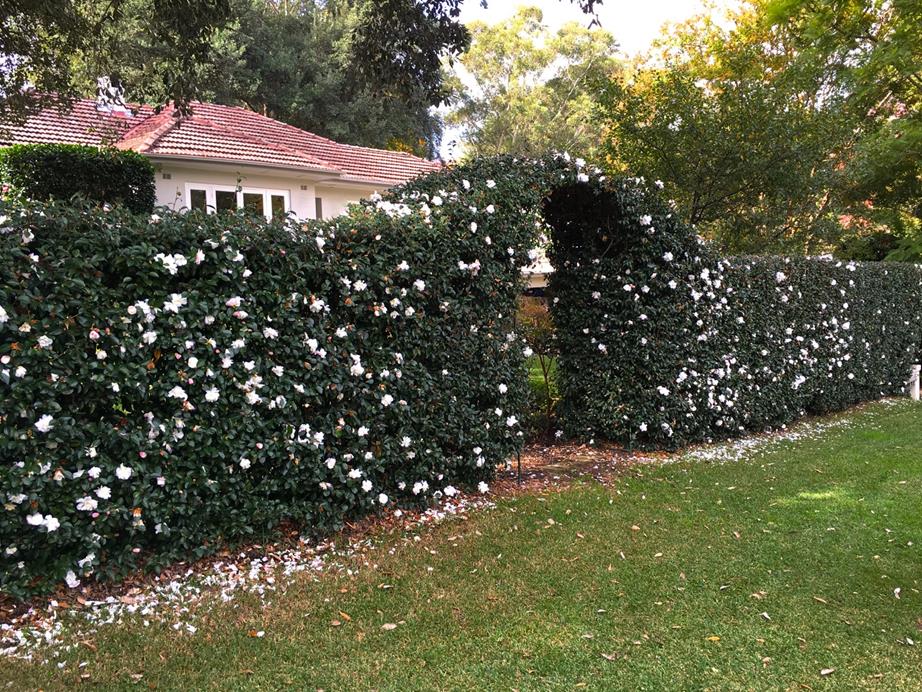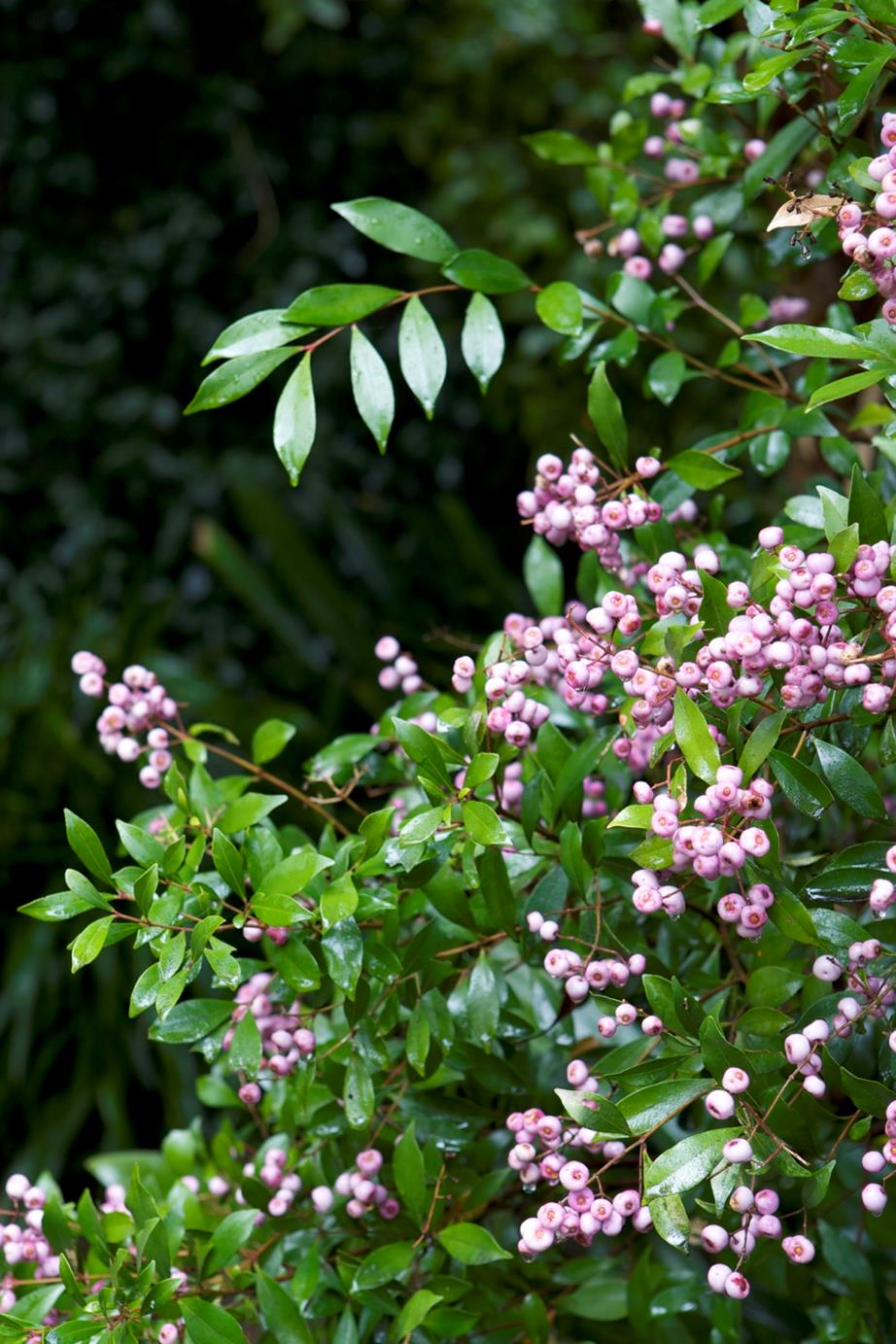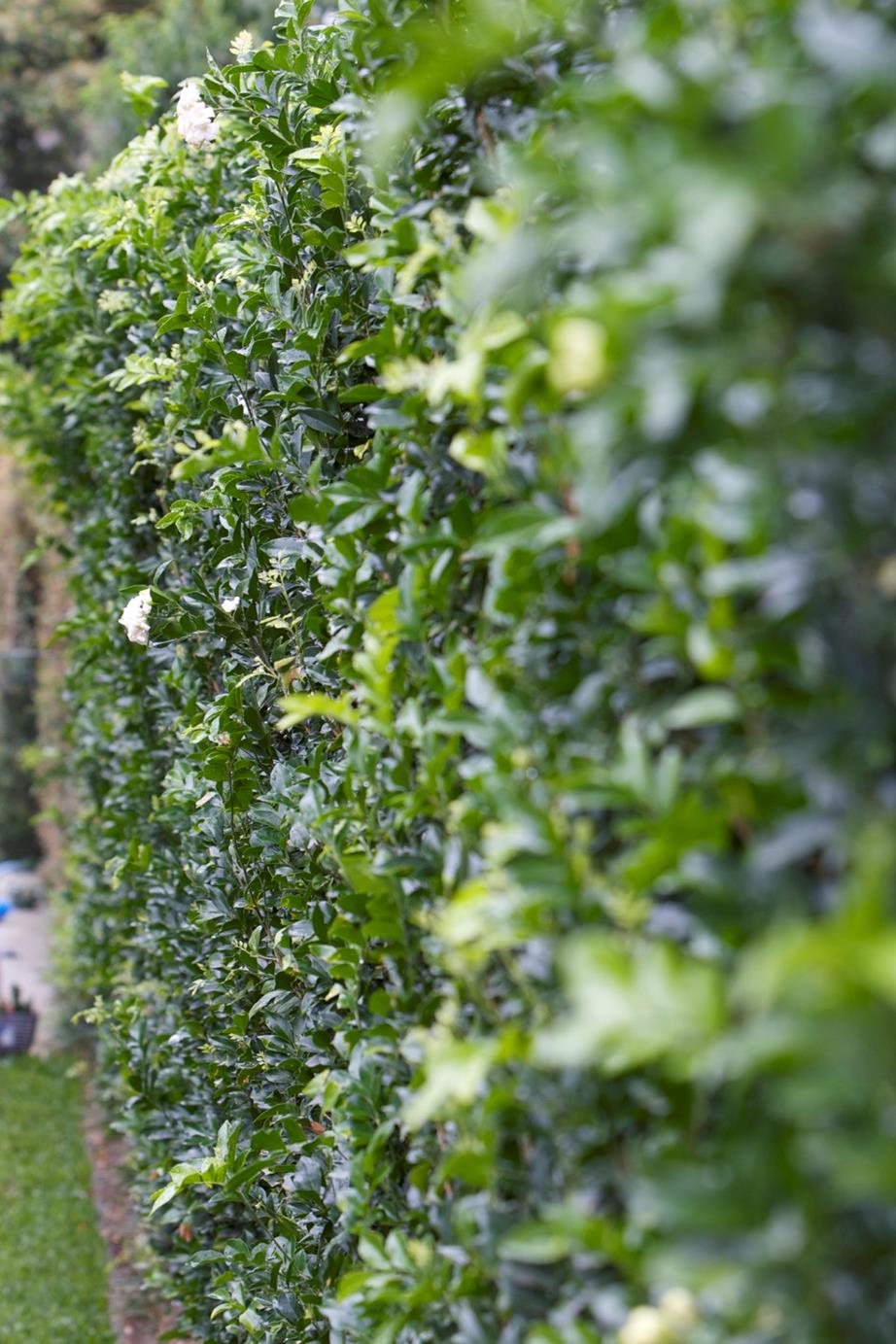Creating Outdoor Privacy With Screening Plants and Hedges

Looking for an easy and affordable way to create a bit more privacy at home? Australian horticulturist Adam Woodhams says screening plants are the answer. “There’s a saying that’s likely as old as suburbia: ‘Good fences make for good neighbors.’ Personally, I think it’s time to reboot that expression to ‘Good hedges grow great neighbors!'” says Adam.”If you need privacy at your place, then it’s worth looking first at hedging and screening plants, as they can do many things that fences and built screens never can.”
What’s the difference between hedging and screening plants?
Probably the first thing to get your head around is the difference between plants grown as a screen and those put in as a hedge. There no hard and fast rule to determine the difference beyond these:
- Hedges totally block out a view while screens break a view.
- A hedge will generally be dense from top to bottom, and will block out light and views. A hedge is also often very effective at blocking out wind. A planted screen will break a view and still allow spotted light through, as well as soften wind without blocking it out entirely.
- Many plants can be used for both with the difference in the end result coming down to how they’ve been cared for.

Sasanqua Camellia (Photo Credit: Homes to Love)
How to Choose the Right Screening Plants
The single greatest benefit of using hedges for privacy is that they are providing you with a living, breathing divider that doesn’t just serve a purpose, but also beautifies your outdoor spaces. There’s no doubt built screens are super effective and do give you cover instantly, but who wants to spend 10 years looking at slats or lattices instead of a lush, green backdrop?
What to Look For in Screening Plant Varieties
- Fast-growing
- Natural tendency to have densely packed foliage
- Takes to trimming well
- The right mix of upright and horizontal growth.
The important thing is to select a variety that is taller than you need. For example if you need a 7-foot hedge, select a variety that grows to 9 feet or even 16 feet. Why? A plant can take years — even a decade — to reach its maximum height, and even then, it may only do so under ideal conditions. However, it may only take 18 months to get to one-third or so of its potential maximum. Then, you just prune the top off when it hits the ideal height.
Most hedging varieties are selected or bred for their speed. To grow at their maximum speed, they need to be an appropriate variety for the position they’ll be planted in, will need the right level of light, the right amount of water, and appropriate fertilizing. To achieve density, they’ll also need the right amount of regular tip pruning.

Small Leaf Lilly Pilly (Photo Credit: Homes to Love)
Planting and Growing Tips
- Install a drip irrigation system on a simple timer when you plant. Correct watering is critical for quality growth.
- Improve the planting soil to suit the plant variety. As a general rule, blending some quality compost or composted manure through is ideal.
- Feed at planting time and then at regular intervals.
- Prune early and prune often. It is regular pruning and shaping that make a hedge dense and bushy. The easiest way to a perfect finish is with battery-powered hedging shears.
- Mulch well at planting time and top up at least once a year.
- For a short hedge, just dig individual holes. For a larger hedge, you’ll find trench planting faster and easier.

Orange Scented Jasmine (Photo Credit: Homes to Love)
Top Five Hedging Plants for Privacy
You’ll find that the selection of hedging plants available to you will vary depending on your location. Talk with a horticulturist at your local garden center for advice for your situation. Here are five of my favorites.
- Murraya or Orange-scented Jasmine is a native & it’s good to around 10 feet, but I have seen it get to 16 feet. It flowers abundantly two, three, or more times a year with masses of richly fragrant small white flowers.
- Sasanqua Camellia varieties are an awesome choice with a whole range of sizes up to about 16 feet. They have beautiful glossy, green leaves and bear masses of gorgeous flowers in late summer into autumn.
- Photinia are a traditional favorite with many varieties available that are fast-growing. A superb highlight is the bright red color of the new growth. Their large foliage makes them ideal for larger hedges, and they are very hardy.
- Small-leaved lilly pilly are a great Australian choice; very hardy and beautiful with a tropical look. They have white fluffy flowers in spring followed by edible berries. A variety called “Goodbye Neighbors” will get you privacy in next to no time.
- Clumping bamboos are my ultimate favorite. Pick a variety to suit your height requirements — they can grow between roughly 6 feet to 65 feet — plant, feed, water, and then step back! I screened a three-story house from view in just over 18 months! To really kick them along, feed every three months with quality lawn fertilizer. They are a giant grass, after all. A bonus is they don’t need regular pruning — just annual thinning out of older shoots.
Hedging Golden Rules
- Don’t be tempted to plant too close together. Yes, your hedge will form up faster but plants will end up competing with each other for food and water.
- Consider your neighbors. Don’t plant anything that will block their views, cause them a maintenance headache, or overshadow or block their sunlight.
- Research, research, research. Take the time to find the right plants for your situation.
- Buy plants as advanced as you can afford to get your hedge faster.
This article was written by Homes to Love editors. For more, check out our sister site, Homes to Love.
More From FIRST
10 Beautiful Entryways to Inspire Your Spring Redecorating













